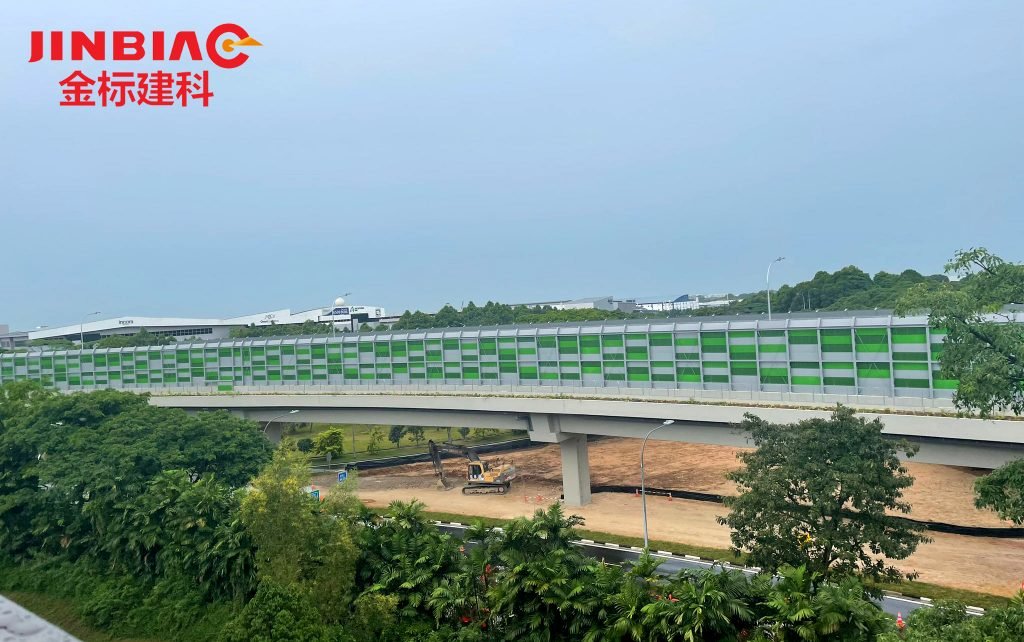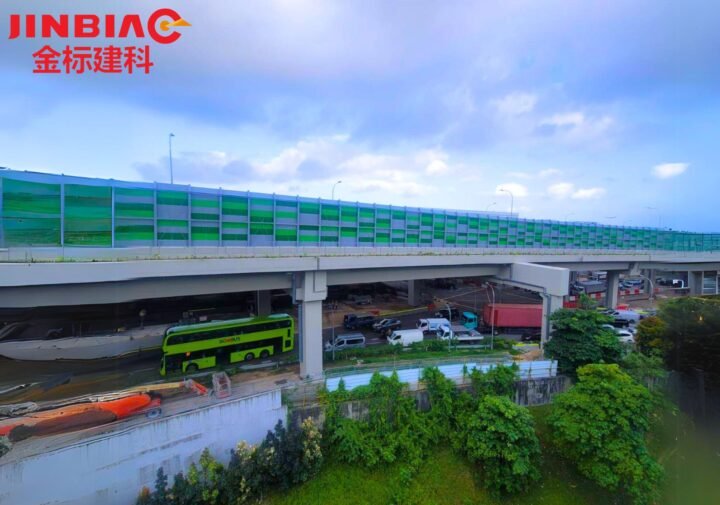
Noise barriers, also known as sound barriers, have become an integral part of the modern urban and suburban landscape. They are those often-concrete walls you drive by on highways, attempting to muffle the relentless noise of traffic.
But, these barriers do more than just shield us from the auditory onslaught of daily life. They cater to an important facet of urban planning and environmental design that is catching the interest of a growingly concerned public.
Noise Barriers
Noise barriers are physical structures built to reduce the transmission of sound. They can be found along highways, mass transit lines, and around businesses or residential areas.
The idea is relatively simple — when sound waves encounter the barrier, they are either reflected, absorbed, or diffused, which lessens the impact of noise on the listener. But the story doesn’t end there.
But noise barriers are more than just acoustic shields. They provide a slate for artistic expression, a means to enhance privacy, and even contribute to the aesthetic appeal of an area when artfully designed. With this in mind, it’s important to recognise how noise barriers not only diminish sound but also create communities and spaces where serenity can thrive.
The Benefits of Noise Barriers
The benefits of a noise barrier goes far beyond the expected dulling of unwanted sounds. Here are some key advantages that noise barriers bring to the table:
● Reducing Noise Pollution
The primary reason for their existence, noise barriers act as a physical obstruction to the spread of sound, lowering noise levels significantly. This effect has proven to reduce stress, improve sleep quality, and even boost property values in areas where noise is a concern.
● Privacy Enhancement
Barriers shield residential areas, schools, and other sensitive zones from visual and audible intrusions, allowing for greater privacy and peace of mind.
● Aesthetic Benefits
When designed with creativity and an understanding of local culture, noise barriers can become a canvas for public art and greenery, contributing to the beautification and individuality of a space.
● Health and Community Well-being
By creating quieter environments, barriers aid in the fight against noise-induced health issues such as hearing loss, high blood pressure, and heart disease. They also foster community togetherness by making outdoor and public spaces more inviting and conducive to social activities.
Types of Noise Barriers
Noise barriers come in various forms, each catering to different environmental and spatial requirements. Some common types include:
● Earth Berms
Mounds of earth strategically placed between noise sources and the receiver can be remarkably effective at absorbing sound.
● Reflective Walls
Made of materials that bounce sound energy away from the protected area, reflective walls are the quintessential barrier usually found along highways and railways.
● Absorptive Walls
These barriers are built with materials that contain noise, such as concrete with specialised perforations, which dissipate and absorb sound waves.
● Natural Barriers
In some cases, natural elements such as trees and shrubs are used as barriers to dampen sound, combining ecological benefits with noise reduction.
Each barrier type has its place, and the choice often depends on factors like local climate, available space, and the specific needs of the area.
Planning and Installing Noise Barriers
The implementation of noise barriers must be a carefully orchestrated affair. It involves detailed planning that takes into account a variety of factors, including the following:
● Cost
The construction and maintenance of noise barriers can be expensive. Balancing costs with the expected benefits is crucial.
● Local Regulations
Noise barriers must comply with local land use and building regulations. Failure to do so can result in legal hurdles and barriers to completion.
● Maintenance
Barriers require regular upkeep to ensure their continued effectiveness. Planning for long-term maintenance is just as important as the initial construction phase. By addressing these considerations, the installation of noise barriers can be more strategic and successful in the long run.
Soundscaping the Future: Innovations in Noise Barrier Technology
As with all fields, the domain of noise barriers is constantly evolving. Engineers and designers are now exploring novel technologies and materials to create more efficient, sustainable, and aesthetically pleasing barriers.
With the advancement of smart materials, there is a potential for noise barriers that can adapt their acoustic properties in real-time, based on the varying conditions. The integration of renewable energy solutions, such as solar panels or wind turbines, could turn noise barriers into dual-purpose facilities that generate power while reducing noise.
These advancements herald an era where noise barriers are not just passive elements but interactive components of our environment.
Hebei Jinbiao is a leading company in Noise Barrier products and Fencing products in Singapore. We guarantee to provide you with the most high-quality Sound Barrier and Fencing products along with our dedicated assistance. Do not hesitate to contact us. We are looking forward to helping you solve your noise issues, safety issues and protecting you from noise pollution as well as ensuring your safety.

